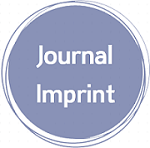Perceived Myths and Misconceptions about the Novel COVID-19 Outbreak
Downloads
The outbreak of the novel Coronavirus (Covid-19) which was first reported in Wuhan, China has now spread globally becoming a matter of international concern. The World Health Organization officially changed their classification of the situation from a Public Health Emergency of International Concern to a Pandemic on March 11, 2020. As the corona virus continues to spread rapidly so do the headline news and a host of misconceptions surrounding the outbreak. This paper investigated and highlighted some of the most common misconceptions surrounding the outbreak of the covid-19. Using a cross-sectional survey method, the study collected and analysed data on these misconceptions and examined factors that influence the levels of these misconceptions. The study identified four top misconceptions respondents believe or agree with. These are; the novel corona virus is deadly (83.3%), Hand sanitizers do kill the virus (67.5%), face mask offer protection against the virus (55.8%) and Drying the hands with hand dryer helps to prevent the virus (44.2%). However, respondents were able to disagree, identify correctly and debunked certain statements of misconception. These include coronavirus affect only the elderly (95%), the virus can spread by mosquito bites (87.5%), antibiotics are effective for treatment (60%) and homemade remedies can cure the corona virus (54. 2%). Factors such as employment status and the relatedness of respondent’s occupation to Human Health were found to influence some of these misconceptions. Exploring these misconceptions keep the general public fully educated and informed about the facts of the outbreak as well as avoiding making up these misconceptions to protect themselves.
Downloads
Rothe, C., Schunk, M., Sothmann, P., Bretzel, G., Froeschl, G., Wallrauch, C., Zimmer, T., Thiel, V., Janke, C., Guggemos, W., Seilmaier, M., Drosten, C., Vollmar, P., Zwirglmaier, K., Zange, S., Wölfel, R., & Hoelscher, M. (2020). Transmission of 2019-nCoV Infection from an Asymptomatic Contact in Germany. New England Journal of Medicine, 382(10), 970–971. doi:10.1056/NEJMc2001468.
Chen, H., Guo, J., Wang, C., Luo, F., Yu, X., Zhang, W., Li, J., Zhao, D., Xu, D., Gong, Q., Liao, J., Yang, H., Hou, W., & Zhang, Y. (2020). Clinical characteristics and intrauterine vertical transmission potential of COVID-19 infection in nine pregnant women: A retrospective review of medical records. The Lancet, 395(10226), 809–815. doi:10.1016/S0140-6736(20)30360-3.
Li, Q., Guan, X., Wu, P., Wang, X., Zhou, L., Tong, Y., Ren, R., Leung, K. S. M., Lau, E. H. Y., Wong, J. Y., Xing, X., Xiang, N., Wu, Y., Li, C., Chen, Q., Li, D., Liu, T., Zhao, J., Liu, M., … Feng, Z. (2020). Early Transmission Dynamics in Wuhan, China, of Novel Coronavirus–Infected Pneumonia. New England Journal of Medicine, NEJMoa2001316. doi:10.1056/NEJMoa2001316.
Yu, P., Zhu, J., Zhang, Z., & Han, Y. (2020). A Familial Cluster of Infection Associated With the 2019 Novel Coronavirus Indicating Possible Person-to-Person Transmission During the Incubation Period. The Journal of Infectious Diseases, jiaa077. doi:10.1093/infdis/jiaa077.
Lee, P.-I., & Hsueh, P.-R. (2020). Emerging threats from zoonotic coronaviruses-from SARS and MERS to 2019-nCoV. Journal of Microbiology, Immunology and Infection, S1684118220300116. doi:10.1016/j.jmii.2020.02.001.
Yang, Y., Lu, Q., Liu, M., Wang, Y., Zhang, A., Jalali, N., Dean, N., Longini, I., Halloran, M. E., Xu, B., Zhang, X., Wang, L., Liu, W., & Fang, L. (2020). Epidemiological and clinical features of the 2019 novel coronavirus outbreak in China [Preprint]. Epidemiology. doi:10.1101/2020.02.10.20021675.
Lai, C.-C., Liu, Y. H., Wang, C.-Y., Wang, Y.-H., Hsueh, S.-C., Yen, M.-Y., Ko, W.-C., & Hsueh, P.-R. (2020). Asymptomatic carrier state, acute respiratory disease, and pneumonia due to severe acute respiratory syndrome coronavirus 2 (SARS-CoV-2): Facts and myths. Journal of Microbiology, Immunology and Infection, S1684118220300402. doi:10.1016/j.jmii.2020.02.012.
Huang, C., Wang, Y., Li, X., Ren, L., Zhao, J., Hu, Y., Zhang, L., Fan, G., Xu, J., Gu, X., Cheng, Z., Yu, T., Xia, J., Wei, Y., Wu, W., Xie, X., Yin, W., Li, H., Liu, M., … Cao, B. (2020). Clinical features of patients infected with 2019 novel coronavirus in Wuhan, China. The Lancet, 395(10223), 497–506. doi:10.1016/S0140-6736(20)30183-5.
Wang, D., Hu, B., Hu, C., Zhu, F., Liu, X., Zhang, J., Wang, B., Xiang, H., Cheng, Z., Xiong, Y., Zhao, Y., Li, Y., Wang, X., & Peng, Z. (2020). Clinical Characteristics of 138 Hospitalized Patients with 2019 Novel Coronavirus–Infected Pneumonia in Wuhan, China. JAMA, 323(11), 1061. doi:10.1001/jama.2020.1585.
Wang, M., Cao, R., Zhang, L., Yang, X., Liu, J., Xu, M., Shi, Z., Hu, Z., Zhong, W., & Xiao, G. (2020). Remdesivir and chloroquine effectively inhibit the recently emerged novel coronavirus (2019-nCoV) in vitro. Cell Research, 30(3), 269–271. doi:10.1038/s41422-020-0282-0.
Colson, P., Rolain, J.-M., & Raoult, D. (2020). Chloroquine for the 2019 novel coronavirus SARS-CoV-2. International Journal of Antimicrobial Agents, 55(3), 105923. doi:10.1016/j.ijantimicag.2020.105923.
Huang, W.-H., Teng, L.-C., Yeh, T.-K., Chen, Y.-J., Lo, W.-J., Wu, M.-J., Chin, C.-S., Tsan, Y.-T., Lin, T.-C., Chai, J.-W., Lin, C.-F., Tseng, C.-H., Liu, C.-W., Wu, C.-M., Chen, P.-Y., Shi, Z.-Y., & Liu, P.-Y. (2020). 2019 novel coronavirus disease (COVID-19) in Taiwan: Reports of two cases from Wuhan, China. Journal of Microbiology, Immunology and Infection, S1684118220300372. doi:10.1016/j.jmii.2020.02.009.
Lai, C.-C., Shih, T.-P., Ko, W.-C., Tang, H.-J., & Hsueh, P.-R. (2020). Severe acute respiratory syndrome coronavirus 2 (SARS-CoV-2) and coronavirus disease-2019 (COVID-19): The epidemic and the challenges. International Journal of Antimicrobial Agents, 55(3), 105924. doi:10.1016/j.ijantimicag.2020.105924.
- This work (including HTML and PDF Files) is licensed under a Creative Commons Attribution 4.0 International License.












